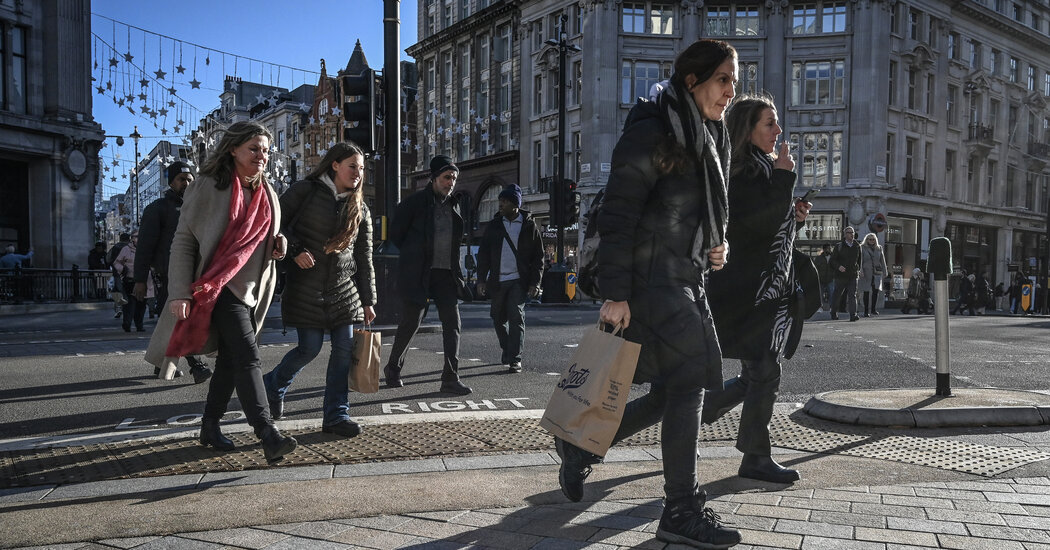The Closing of David Chang’s Momofuku Ko Happened Years Ago
David Chang is “pausing operations” at Momofuku Ko next week, according to a post on his company’s Instagram account. It goes on: “we won’t call this a goodbye, but ko will no longer operate in the way it has.”
Just what that means is unclear, but it sure sounds like some kind of a goodbye given that about three weeks ago Mr. Chang turned out the lights for good at Momofuku Ssam Bar. The strange thing about both announcements is how muted the response has been. Maybe the sheer number of restaurants that have gone under since the pandemic began has made us numb to this sort of news.
The reaction would have been different — louder and more apocalyptic — 10 or 15 years ago. Back then, a change in Ko’s no-cameras policy or Ssam Bar’s doomed Korean-burrito menu would light up the food blogs, whose reporters used to chase scraps of Momofuku news like Woodward and Bernstein. If you weren’t living and eating out in New York then, it’s hard to imagine what the early days of those restaurants were like, especially Ko.
It was the restaurant where we first witnessed a frozen torchon of foie gras being shaved to make a mountain of salty pink snow. Where we had our first spoonful of panna cotta that tasted like the milk in the bottom of a bowl of cornflakes. Where we sat at a counter and listened to Yo La Tengo while staring at the backs of Mr. Chang and his cooks until one of them would turn from the stove to hand us a plate and mumble something like, “This is an English muffin with bay-leaf butter and melted pork fat” or “You’ve got a soft-boiled smoked egg with potato vinegar, fingerling potato chips and, uh, Tennessee caviar.”
Ko was also the first restaurant that made us weep and gnash our teeth at the difficulty, bordering on impossibility, of securing an online reservation. There were just 12 backless stools at the counter, and they were all offered on Momofuku’s website at the same time, 10 a.m. By 10:01 they had all been snapped up. Rational people began to blame their inability to score on nefarious bots and scalpers, a preview of things to come.
But the biggest and bravest thing Ko did was to go head-to-head with the most expensive and highly regarded places in the city, the Le Bernardins and Daniels and Jean-Georges, without benefit of a reservationist, or a maître d’hôtel, or a deep wine list, or a printed menu, or chairs with lumbar support, or coffee or tea. Ko would stand or fall on the strength of its cooking alone.
Behind this was Mr. Chang’s hunch that the paraphernalia of fine dining — not just white tablecloths but maybe even tables themselves — had become clunky and dated. Mr. Chang, who was 30 when Ko opened, sensed that for a lot of younger diners the old, formal style didn’t provide much pleasure; it probably stood in the way of pleasure. At Ko, all the thrills were edible. For 10 courses of this, you paid $85. “Cook’s prices,” as Mr. Chang was heard to say.
Ko was a guerrilla rebellion against fancy-pants restaurants and everything they stood for. It was food’s punk-rock moment. At least, that’s how it felt in the spring of 2008. It didn’t seem crazy to believe that high-performing restaurants could change, too, by dropping all the folderol that drove up prices and made people uncomfortable.
As I said, there may have been an element of hysteria. Anyone who has studied the history of revolutions could have told us that rebels who aim to overthrow the old order don’t take long to start dressing and acting like the former ruling class.
Momofuku Ko, which will serve its last meal on Nov. 4, looks different these days. In 2014, it moved to much more spacious and luxurious quarters off East First Street. The seats had backs, there was more than one restroom, and among the servers gliding along the floor was a sommelier who could help you navigate a wine list that ran to more than 250 pages.
In other words, Ko ended up with almost every one of the fine-dining trappings it had rejected, up to and including high prices. The cost of the tasting menu today is $280.
When I reviewed the second location, in 2015, I was boggled by how much more refined and accomplished the cooking had become. One thing I wished for was a cogent through-line on the menu, a unifying sensibility to stitch together dishes that ranged from up-to-the-minute modernism to wonderfully against-the-grain blasts of old-guard French classicism. At my last visit, early this year, the through-line seemed to have vanished entirely. There were very few thrills, and how it all hung together was anybody’s guess.
Mr. Chang moved to California a few years ago. As he extinguished restaurants in Las Vegas, Sydney and Toronto, and culled the herd in New York (Kawi, Bar Wayo, Nishi and Fuku+ were all dispatched), it became increasingly clear that overseeing high-flying, inventive kitchens of the kind where he made his name is no longer his top priority.
We now know that while Mr. Chang was building Ssam Bar and Ko, times when he seemed to have a savant’s grasp of modern dining sensibilities, he was often out of control. By his account and those of others, he punched walls, kicked furniture, threatened employees. His restaurants seemed to promise a fresh take on the whole culture of eating out, but they were built on some of the worst and oldest habits in the business.
I can see now that I was wrong about the garage-band austerity of Ko in 2008. I thought the point of ditching all the trappings was to make the restaurant accessible to people who couldn’t usually afford fancy restaurants. That may have been a side benefit, but I now suspect the explanation was much simpler: David Chang was in a hurry to get to the top. Waiting until he could afford a 250-page wine list would have slowed him down.
Hannah Selinger, the beverage director at Ko in the first year, told me in an email that while the list was “slim” in the beginning, it was “geared toward a higher price point,” with grower Champagne and premier cru Burgundy. The restaurant was never an experiment in fine dining for the masses.
Such is Mr. Chang’s cultural reach as a podcast host, TV producer, talk-show guest, packaged-goods baron and noodle philosopher that you can’t really say that he’s been diminished by losing a restaurant or two. The odd thing is that the city doesn’t feel especially diminished by losing Ko and Ssam Bar, either. If you’d said that in 2008, you would have been wrong.


